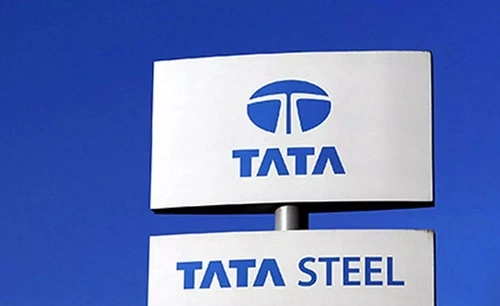Tata Steel has demonstrated resilience amid a challenging global steel market as per early 2025. In Q3 FY25, the company reported a consolidated net profit of ₹326.64 crore, marking a 36% year-on-year decline, primarily due to subdued steel prices across various regions.
Despite a 3% decrease in total revenue to ₹53,648 crore, Tata Steel’s Indian operations achieved record crude steel production of 20.8 million tonnes and finished steel output of 19.9 million tonnes in FY24.
Strategically, Tata Steel is advancing its decarbonization efforts. The company has committed £1.25 billion to construct a state-of-the-art electric arc furnace at its Port Talbot facility in the UK, aiming to reduce carbon emissions and modernize its production processes.
This transition is expected to result in approximately 2,500 job reductions, with the UK government providing £500 million in support.
In India, Tata Steel continues to focus on technological advancements and sustainability initiatives, positioning itself for long-term growth in the evolving steel industry and this page consists about the detailed SWOT Analysis of TaTa Steel, so let’s go ahead.
Strengths
- Robust Financial Performance: In the fiscal year 2023-24, Tata Steel reported a consolidated EBITDA of ₹23,402 crores, driven by strong performance in its Indian operations.The company has effectively managed its debt, maintaining a net debt of ₹77,550 crores and generating a cash flow from operations amounting to ₹20,301 crores.
- Strategic Alliances and Innovations: Tata Steel has forged significant partnerships, such as the collaboration with the Mining Technology Innovation Hub at IIT (ISM) Dhanbad (TEXMiN) to revolutionize India’s mining sector.Additionally, the company has been recognized as a 2024 Steel Sustainability Champion by the World Steel Association for the seventh consecutive year, highlighting its commitment to sustainable practices.
- Digital Transformation and Industry 4.0: The company has embraced digital technologies, with its production facilities at Jamshedpur, Kalinganagar, and IJmuiden included in the World Economic Forum’s Global Lighthouse Network for the implementation of Industry 4.0 technologies.

Weaknesses
- Challenges in European Operations: Tata Steel’s UK operations have faced significant financial challenges, with pre-tax losses increasing nearly fourfold to £1.12 billion in the past year. This was primarily due to the write-down of legacy operations in South Wales amid a transition to greener steelmaking supported by taxpayer funds.
- Exposure to Market Volatility: The company’s financial performance is susceptible to fluctuations in global steel prices and demand, which can impact profitability. For instance, in the quarter ending September 30, 2024, Tata Steel reported a 3.2% decline in revenue to ₹539.05 billion, attributed to lower steel prices and subdued demand.
- High Operational Costs: Despite efforts to optimize costs, Tata Steel’s operations, particularly in Europe, continue to grapple with high operational expenses, affecting overall margins. The UK business incurred an EBITDA loss of £364 million in FY2023-24, underscoring the need for cost management strategies.
Opportunities
- Transition to Green Steel Production: Tata Steel has initiated plans to transition to Electric Arc Furnace (EAF)-based steelmaking at its Port Talbot facility in the UK, with a capital investment of £1.25 billion, including a £500 million grant from the UK government. This move is expected to significantly reduce carbon emissions and align with global sustainability goals.
- Expansion in the Indian Market: The company is scaling up to capitalize on India’s growth opportunities, with investments aimed at doubling its capacity in the country. This includes scaling up iron ore mining and debottlenecking the supply chain to enhance cost leadership.
- Research and Development Initiatives: With an R&D spend of ₹953 crores in FY2023-24, Tata Steel developed 105 new products and was granted 588 patents, reflecting a strong focus on innovation to meet evolving market demands.
Threats
- Regulatory and Environmental Compliance: The steel industry faces stringent environmental regulations, requiring substantial investments in cleaner technologies. Non-compliance can result in legal penalties and reputational damage. Tata Steel’s transition to EAF-based steelmaking in the UK is a strategic response to such regulatory pressures.
- Global Economic Uncertainties: Economic downturns can lead to reduced demand for steel products, affecting sales and profitability. The company must remain agile to navigate potential economic challenges.
- Intensifying Competition: The global steel market is highly competitive, with players investing in advanced technologies and cost-effective production methods. Tata Steel must continue to innovate and optimize operations to maintain its competitive edge.
Conclusion
In 2025, Tata Steel continues to demonstrate resilience and strategic foresight in navigating the complexities of the global steel industry. By leveraging its strengths in financial performance, strategic alliances, and digital transformation, the company is well-positioned to capitalize on emerging opportunities. However, addressing challenges in its European operations, managing market volatility, and adhering to environmental regulations will be crucial for sustained growth. Tata Steel’s commitment to innovation and sustainability underscores its vision for a responsible and prosperous future in the steel sector.
Anantha Nageswaran is the chief editor and writer at TheBusinessBlaze.com. He specialises in business, finance, insurance, loan investment topics. With a strong background in business-finance and a passion for demystifying complex concepts, Anantha brings a unique perspective to his writing.


